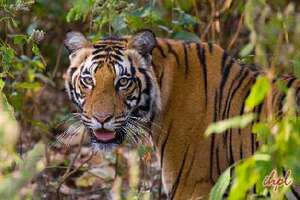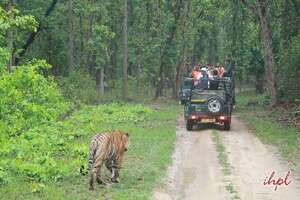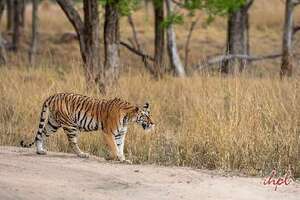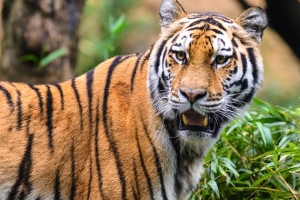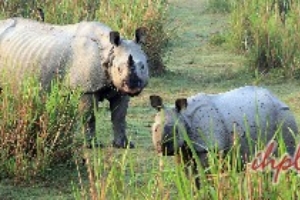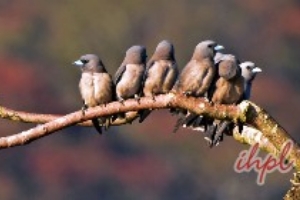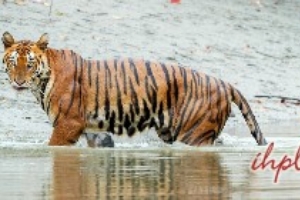No records exist to show when Bandhavgarh Fort was built, in Bandhavgarh National Park. It is believed to be 2000 years old, and there are references to it in the Narad-Panch Ratra and Shiv Purana, which are very ancient books. According to mythology, Lord Rama, of the epic Ramayana, after defeating the demon King, Ravana of Lanka, stopped here and had the Fort built.
He then handed it to his brother Lakshmana to keep a watch over Lanka. That is why the name Bandhavgarh which means Brother’s Fort (Bandhav = Brother , Garh = Fort). Lakshmana became known as Bandhavdhish or “Lord of the Fort,” and is worshipped as the God of the Fort in a temple which exists till date in the Fort. The title of Bandhavdhish is still used by the present Maharaja of Rewa.
Vishnu reclining on a seven hooded snake and carved around the 10th Century. In front of this statue is located a pool of spring water. This is said to be the source of the stream known as Charan Ganga, one of three perennial streams flowing through the park. Tigers and other species of Indian wildlife, visit this pool to drink, and to cool off in summer.
One can park ones vehicles out here and start the climb up to the Fort. The footpath rises at quite a sharp gradient, and the ground is uneven – one therefore needs to be reasonably fit.
As this path is frequented by tigers, check the path for tiger pug marks. Non-stop walking will lead one to complete the climb in an hour’s time, but as there are various rock images and temples one will see in the course of the climb, the time taken to reach the Fort would be longer. The most remarkable sights are the 10th Century rock images of the incarnations of Vishnu. A 22 feet (seven meters) high statue of Narasimha (half-man half-lion), a carving of Barah Bhagwan (boar incarnation), the fish avatar and the tortoise incarnation are some of the monuments one will see lying in their natural state in the jungle. As some of the statues are a bit away from the main path, it is best to take a guide.
The main gate of the Fort is called Karn Pol, and on entering through this, one will see huge grasslands interspersed with large reservoirs of water which have turtles, and the many remains of human inhabitants of the Fort – from ancient statues to the barracks occupied by Rewa’s troops up to independence. Kabir Das, a celebrated 16th Century saint, once lived and preached here. The temple where Lakshmana was worshiped is still functioning, with Lakshmana still the God of the Fort. Earlier there was a priest whose allegiance was with the Maharaja of Rewa. The present priest is an employee of the forest department. Two major festivals are celebrated at the temple with the local surrounding population being allowed free access during this time.
The view, from the Fort, of the surrounding area of Bandhavgarh National Park can only be described as breathtaking. While driving through the Park, one gets the feeling that the jungle is not thick. From the Fort one can understand the thickness and density of the forest cover below and get an idea of the variety of Indian wildlife resident in the park.
The Maharajas and their dynasties have gone and in their place we now have the ‘Kings’ of the jungle ruling Bandhavgarh. Tigers, and other forms of Indian wildlife, visit the Fort and the guides and the temple priest will recount their experiences when they have encountered these ‘Kings’ within the Fort walls.
One comes back from a trip to the Bandhavgarh Fort with the feeling of absolute harmony with nature of all that one has come across, during the climb and, inside the Fort. Those who do not wish to visit the Fort, must at least visit the reclining Vishnu located at Shesh Saya. As mentioned earlier vehicles can drive up till here.



